Story Time! Did you know the oldest knitted artifact comes from Egypt’s Islamic period, around 1000-1400 CE?
The history of knitting reaches way beyond the reach and influence of your grandmother’s cozy sweaters or today’s trendy craft.
Knitting has evolved from a survival skill to an art form, influencing almost every civilization. The origin story remains mysterious, and evidence points to its independent emergence across different parts of the world.
Ancient Egyptian “coptic socks” and medieval European guilds show how knitting has remarkably impacted human culture.
What I love about knitting is its incredible progression through time. Simple loops of yarn became intricate patterns and techniques.
Hidden stories, technological advances, and cultural importance make knitting’s history a fascinating story to tell.
Ancient Origins of Knitting
The story of knitting begins in the Middle East, specifically Egypt. Precious fragments from the 5th-6th centuries tell us about this craft’s earliest days.
Egyptian Beginnings and Early Evidence
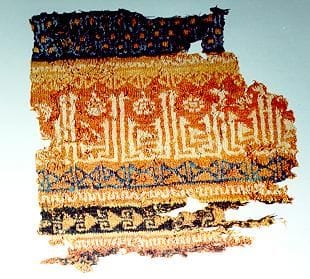
Egyptian burial sites give us the most compelling evidence of early knitting.
Archeologists found beautiful socks made from indigo and white cotton resembling Islamic ceramics with geometric patterns.
These Egyptian socks from 1000-1400 CE show advanced techniques that would impress even modern knitters.
Rise from Nålbinding
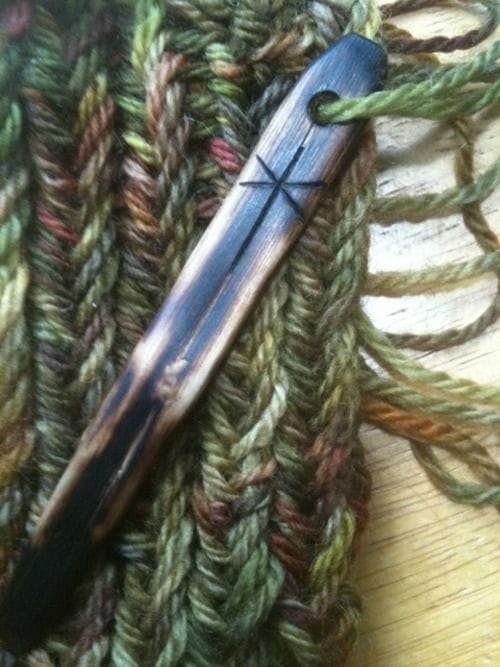
Nålbinding came before actual knitting. I love that the oldest nålbound textile fragment goes back to 6500 BCE – archeologists found it in Nahal Hemar cave, Israel.
The shift from nålbinding to knitting brought significant changes to how people made textiles:
- Nålbinding used one needle and created knots
- Knitting used two needles and created interconnected loops
Spread Through the Middle East
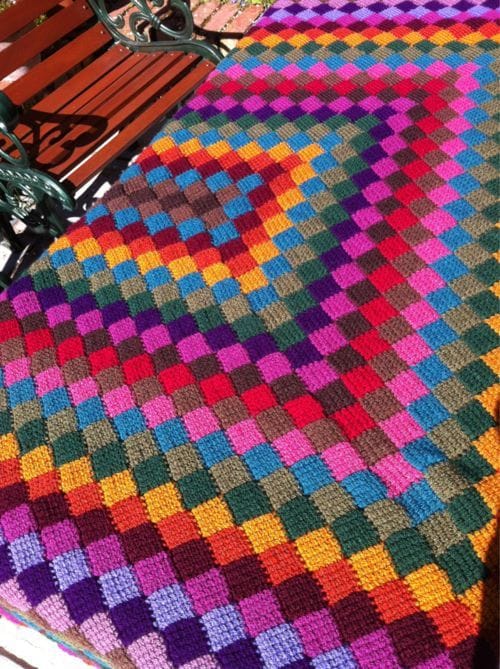
The craft moved across the Mediterranean through trade routes. Beautiful knitted pieces in Spanish royal tombs at Las Huelgas monastery, from King Alfonso VIII’s time (1156-1214), show us this expansion.
Like Arabic and Semitic languages, the right-to-left knitting direction points to its Middle Eastern roots.
These early pieces show such skill and complexity that knitting must have been a mature craft by then. The beautiful textiles we’ve found likely come from an even older tradition that thrived in this region.
Medieval Knitting Revolution
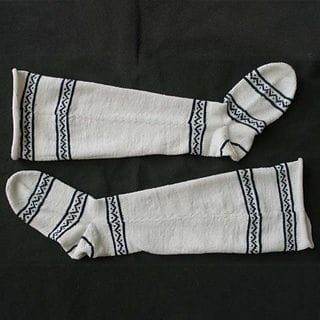
The sort of thing I love is how knitting evolved from a simple craft into a prestigious profession during medieval times.
The first knitting guild appeared in Paris around 1268, which marked the beginning of knitting’s professional journey.
Rise of European Knitting Guilds

Early 19th c. Image source meg-Andrews
Knitting guilds spread throughout Europe in the 14th century and became powerful institutions.
These organizations allowed only male members, and the Paris knitting guild achieved such status that it joined the Six Corps – the city’s six most important guilds by 1514.
Development of New Techniques
Becoming a master knitter required dedication and skill. Here’s what aspiring knitters need to accomplish:
- Three years of intensive apprenticeship training
- Creation of masterworks including:
- A woolen jacket
- A cap
- Gloves with fingers
- A wall hanging with flower patterns
Royal Patronage and Fashion
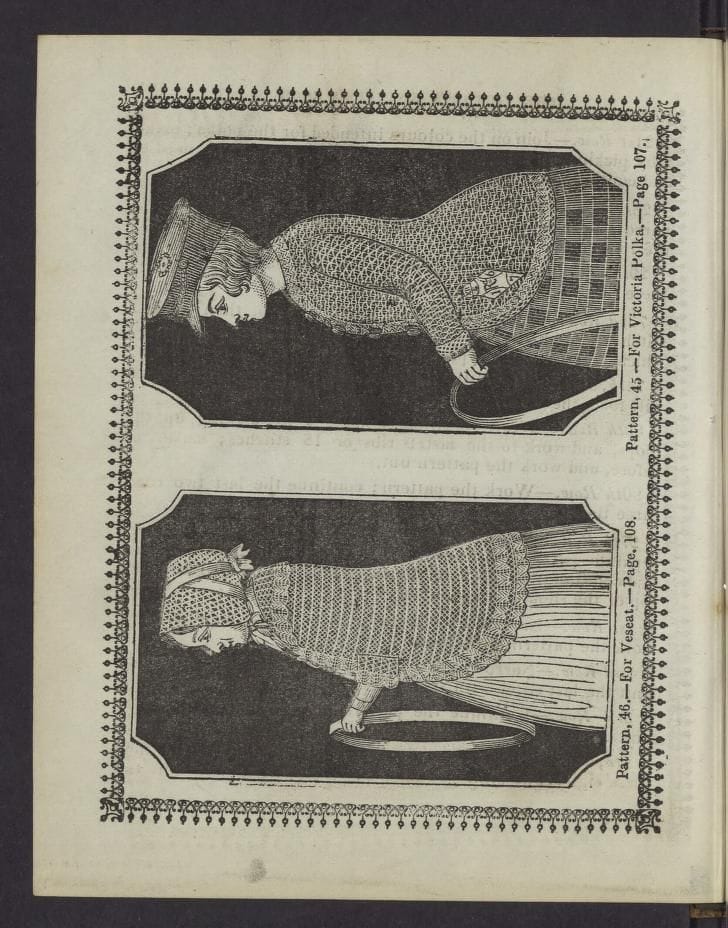
Knitting became so crucial that it caught royal attention.
The Cappers Act of 1571 required everyone over six years old (except for certain nobles and ladies) to wear English-made knitted wool caps on Sundays and holidays. People who didn’t comply faced a fine of three shillings and four pence.
This act protected English cap makers’ livelihoods and showed how knitting had grown from a simple craft into a regulated industry. The guilds’ quality standards lifted knitting to an art form that produced remarkable pieces in textile history.
Industrial Age Transformation
The industrial age transformed the way we make knitted goods. A clergyman named William Lee created the first knitting machine called the stocking frame in 1589.
Invention of the Knitting Machine
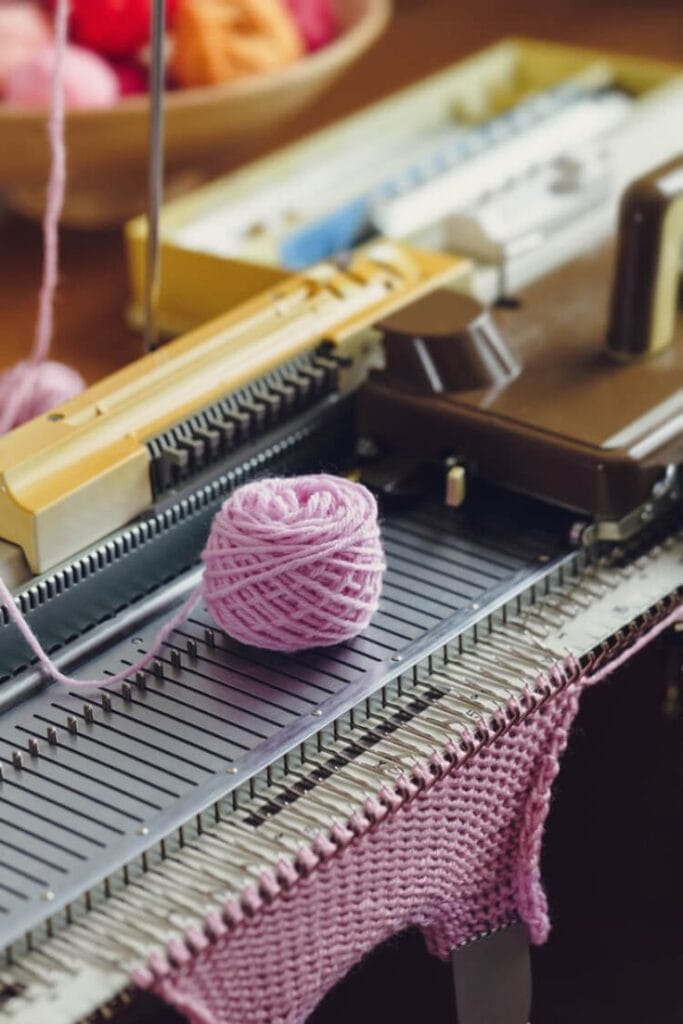
Queen Elizabeth I rejected Lee’s patent request because his machine-made socks felt too coarse. Lee didn’t give up and improved his design:
- Increased from 8 to 20 needles per inch
- Created softer, finer silk socks
- Developed barbed needle technology
Impact on Traditional Craftsmanship
Queen Elizabeth I’s worries about job losses turned out to be true. Hand knitting had mostly disappeared as an industry by the mid-19th century, though many people took it up as a hobby.
Steam-powered machines changed working conditions drastically – workers spent 12 hours in factories while machines ran non-stop.
Mass Production Era
The industry saw remarkable changes. Steam power dominated 75% of cotton mills by 1835, and Britain had more than 50,000 power looms running.
The sort of thing I love is how these machines could produce in 2,000 hours what Indian factories needed 50,000 hours to make.
Synthetic yarns appeared in the 1950s and made mass production even quicker.
Modern Revival and Innovation
The development of knitting through time shows how this craft adapts to society’s changes. World War II brought the most important revival that led to home knitting reaching its peak.
World War Era Resurgence
Knitting became a patriotic duty during wartime. The numbers paint an impressive picture:
- The Red Cross received over 22 million knitted garments
- Each Women’s Institute member produced 67 garments on average
- Knitters put in two million hours of work
Digital Age Revolution
The digital era has transformed this ancient craft completely.
Online platforms have created virtual communities where crafters share their experiences and techniques.
Websites like Ravelry and Etsy have made patterns available to more people.
Contemporary Craft Movement
Notwithstanding that, the craft has grown beyond its traditional roots. Smart fabrics and 3D knitting technology shape textile production’s future.
Circular knitting has become essential to eco-friendly fashion. This reduces material waste and promotes eco-friendly production methods.
The sort of thing I love is how designer Kaffe Fassett helped change attitudes toward hand-knitting in the 1970s with his unique approach. He famously asked, “Why limit yourself to just one shade of red when you can use 17?”. His philosophy inspires modern knitters to blend traditional techniques with state-of-the-art ideas.
Knitting Today
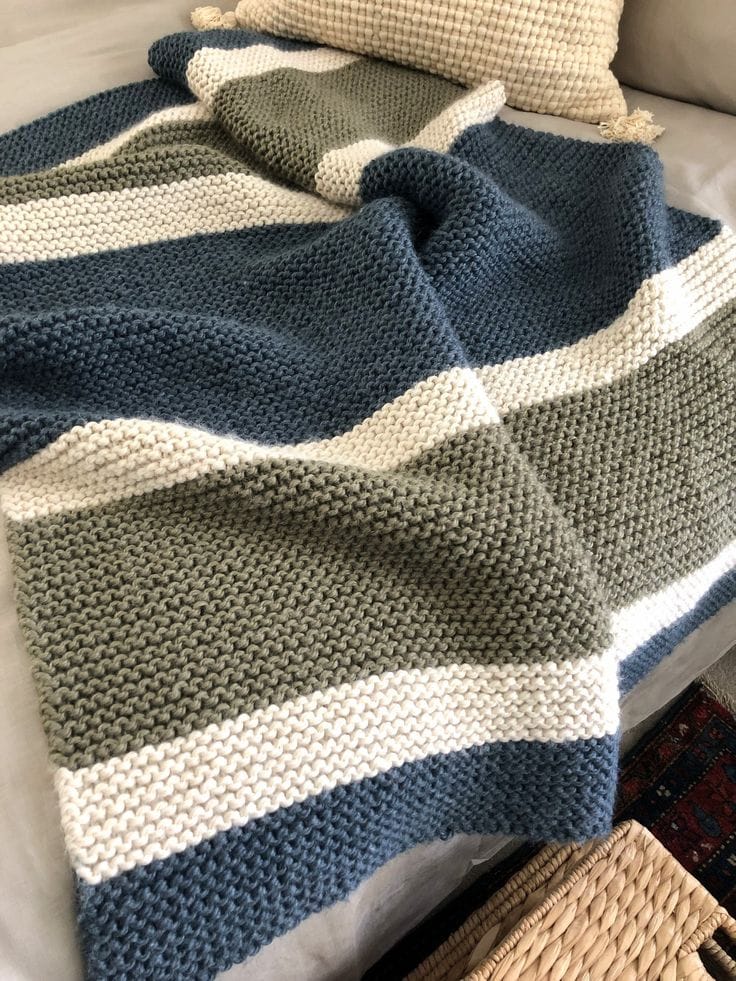
Knitting has discovered a new purpose as both a creative outlet and a therapeutic activity in today’s world.
Of course, this became evident during recent lockdowns when people from all backgrounds turned to knitting for comfort and creativity.
Companies like We Are Knitters reported a stunning 235% spike in sales during March. This surge shows a fundamental change in consumer consciousness as younger generations reject fast fashion and choose eco-friendly alternatives.
Modern knitting has evolved into a powerful force that builds communities. Several key developments are reshaping the craft:
- The rise of diverse knitting groups like the Black Girl Knit Club
- Growth of activism-focused knitting communities
- Emergence of pub-based and LGBTQ-specific gatherings
Social media platforms have played a vital role in this renaissance by connecting crafters worldwide and introducing younger generations to the tradition.
These online communities have significantly promoted visibility for underrepresented groups within the craft community.
Knitting mills continue to adapt by embracing advanced technologies and e-commerce strategies. The global knitted fabrics market will reach USD 46.03 billion by 2033, according to recent data. This growth comes from increasing needs in many sectors, from apparel to automotive applications.
Revival of knitting in the 21st century (e.g., DIY culture, sustainability).
Knitting has emerged as a driving force in the sustainable fashion movement as people become more environmentally conscious.
Crafters now create their garments with eco-friendly materials instead of supporting the ever-changing fashion industry’s environmental effects.
Recent numbers reveal an inspiring trend. We Are Knitters, based in Madrid, experienced a dramatic 235% spike in March, up from their usual 10% annual growth. This surge shows how younger generations care more about sustainability.
Modern knitters carefully select their materials:
- Organic and sustainably sourced fibers
- Recycled and upcycled yarns
- Plant-based alternatives like bamboo and corn fibers
- Natural dyes and cleaning agents
This transformation toward sustainability extends beyond material selection. The “make do and mend” philosophy has found new meaning as knitters reduce their environmental footprint. They wash projects by hand less frequently and dry them on lines.
The revival has led to breakthroughs in yarn production. Many companies now produce yarns consciously, offering plant-based, organic, and ethically sourced wool fibers. Creative solutions like “plarn” – yarn made from recycled plastic bags – have also emerged.
What I love about this return to traditional crafting is how it helps curb climate change. Knitters create high-quality, long-lasting pieces that reduce greenhouse gas emissions and encourage smaller, more curated wardrobes.
Influence of social media and online communities on knitting trends.
Social media has reshaped how we share, learn, and connect through knitting.
Platforms like Ravelry have grown into creative powerhouses. The numbers tell the story – 17 million posts and 242,000 members since 2011.
YouTube has become the lifeblood of knitting education. Expert designers like Kristen Mangus run channels that inspire and teach newcomers through detailed tutorials. These video platforms show:
- Complete product demonstrations
- Pattern explanations
- Material recommendations
- Step-by-step technique guides
Instagram serves as a hub for knitting inspiration. Fiber artists showcase their work through carefully curated feeds. Hashtag communities connect crafters worldwide and promote encouragement and creative exchange among strangers who love knitting.
Virtual knitting groups have changed how we gather. Knitters find comfort in Zoom meetings, while others connect through Facebook groups and Messenger chats. These digital spaces are a great way to get support for those seeking specialized communities – from queer socialist knitters to traditional craft enthusiasts.
What I love most is how these online platforms keep knitting’s social spirit alive while reaching more people.
Knitting’s business side has become deeply connected with social media. Many crafters have moved from hobbyists to entrepreneurs.
Knitting as an art form: exhibitions and innovative techniques.
Knitting has transformed from a domestic craft into fine art and opened exciting new horizons. Artists amaze me as they expand their creative boundaries.
They create everything from large-scale installations to intricate sculptures that challenge our perceptions.
Katharine Cobey’s work serves as a powerful example. Her knitted sculptures tackle profound themes like homelessness and aging, which proves knitting can address serious social issues.
More importantly, Jacqueline Fink’s impressive installations show the medium’s versatility. She dedicated two years to perfecting her technique with merino wool roving from Australian farmers.
Remarkable techniques continue to emerge in this field:
- Experimental knitting with unconventional materials
- Large-scale architectural installations
- Digital-analog hybrid creations
- Sculptural form development
These artistic breakthroughs have earned their place in prestigious exhibitions. The Art at the Kent Gallery in Vermont displayed a remarkable knitted state capitol sculpture in 2021 that emerged through community collaboration.
Faith Humphrey Hill has created a unique approach by combining digital tools with traditional knitting to create innovative portraits.
This artistic progress has sparked a movement where knitters redefine the boundaries between craft and fine art. Artists spend months experimenting with installation pieces that require hand-knitted and hand-knotted elements.
These works go beyond technique to explore themes from environmental consciousness to cultural identity through fiber art.
Fun Facts About Knitting
What I love about knitting is its outstanding records and quirky facts.
Miriam Tegels from the Netherlands stands out as the world’s fastest knitter, with an astonishing 118 stitches in one minute.
These incredible records show knitting’s extraordinary achievements:
- Ida Sofie Myking Veseth created the longest finger knitting at 19,369.5 meters, and she did this after losing her sight
- The Royal Albert Hall in London saw 3,083 people knit together at once, setting a world record
- Edward Hannaford crafted the longest French knitting that stretches 31.42 kilometers
One of knitting’s most intriguing mysteries is the “Sweater Curse” – knitters believe making a sweater for your partner before marriage could lead to a breakup.
Knitting has other fascinating superstitions, too. Some say you shouldn’t knit mittens during a waning moon or your work might end up with extra thumbs.
Knitting keeps growing in popularity. The number of women knitters aged 25-35 in the U.S. jumped by 150% between 2002 and 2004.
A half-hour knitting session burns 55 calories, which makes this creative hobby good for your health, too.
Record-breaking knitting projects.
Knitting has come a long way from its ancient roots, and its achievements continue to expand creative boundaries.
Modern knitting projects amaze me, evolving from simple garments into massive artistic works.
A historic moment happened at London’s Royal Albert Hall when 3,083 people knitted together simultaneously. This event proved how popular knitting remains today.
Athletes have also embraced this craft in unique ways.
David Babcock stands out for knitting a 12-foot scarf during the Kansas City Marathon. He finished both tasks in 5 hours and 48 minutes.
Kanika Kapur took things further by creating the world’s largest hand-knitted blanket. Her creation spans 3,952.21 square meters in Dubai.
Knitters worldwide have set remarkable records that highlight their skill and dedication:
- A massive scarf stretching 33.74 miles emerged from 2,000 knitters’ work over three years
- Giant knitting needles reached 13 feet in length
- Speed knitting reached new heights, with 262 stitches completed in three minutes
Knitting has transformed from a practical craft into a platform for artistic expression.
Extreme knitting now attracts significant attention, with oversized projects commanding $500-$800 because of their unique appeal and intensive work.
Famous historical figures who knitted.
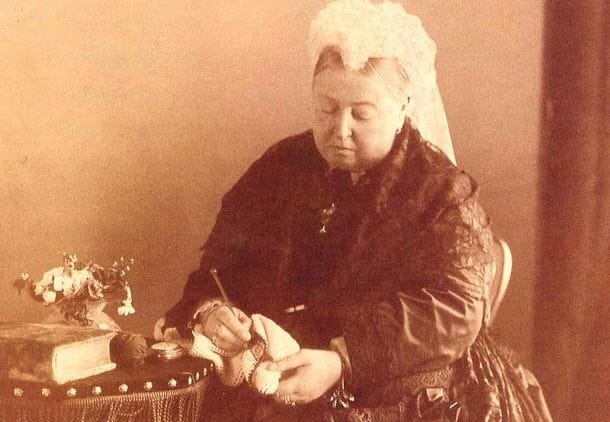
Royal figures and political leaders have shown a deep commitment to knitting throughout history.
I love how Queen Victoria’s passion for knitting turned it from a basic necessity of working-class life into a respected Victorian hobby.
Knitting has strong ties to the British royal family. Princess Elizabeth and Princess Margaret became inspiring examples when they knitted for the war effort during World War II.
Their mother had different feelings about it, though, and she remembered World War I as endless “knitting, knitting, knitting”.
These remarkable figures championed knitting:
- Eleanor Roosevelt, who knitted through political conventions and UN meetings
- Grace Coolidge, who saw knitting as a “stabilizer in time of perplexity.”
- Queen Victoria, whose influence raised knitting to an art form
Knitting played a surprising role in espionage. British secret agent Phyllis Latour Doyle used it as her cover while gathering intelligence during World War II. Molly “Old Mom” Rinker took this idea even further.
She would sit on hilltops with her knitting needles and spy for George Washington during the Revolutionary War.
Eleanor Roosevelt’s relationship with knitting stands out among these stories. She learned to sew and knit by age six. She cleverly used knitting in political meetings to stay alert and focused while appearing busy with her needlework.
Surprising uses of knitting in modern applications.
Knitting has evolved far beyond traditional garments and accessories into advanced applications. The medical field now uses knitted textiles to create groundbreaking devices like artificial blood vessels, hernia patches, and cardiac support devices.
Knitted materials offer several key advantages in medical applications:
- More flexibility and higher porosity
- Superior forming technology
- Better structural integrity
- Natural conformity to body shapes
MIT researchers have created smart textiles that detect movement and posture. These breakthroughs could transform healthcare through:
- Smart shoes that track patient gait during rehabilitation
- Socks that monitor diabetic foot pressure
- Pressure sensors for prosthetic limbs
Knitting has made its way into architecture, too. Building facades now use knitted textiles to update their appearance and create green profiles that help plants and microorganisms thrive.
These architectural designs take advantage of yarn’s lightweight properties and can include features like passive lighting through soft solar cells.
The industrial sector ended up adopting knitting technology as well. Modern knitted materials now work as seals, damping elements, and protective covers for shared robots. Knitted basalt has become an alternative to traditional steel reinforcements in the automotive industry because it resists rust better.
Conclusion
Knitting’s rise from ancient Egyptian socks to modern smart textiles tells a fantastic story. This craft has stood the test of time and adapted to countless cultural changes and technological advances.
The dual nature of knitting captures my imagination. Modern machines produce most knitted goods today, yet hand knitting thrives as art and therapy.
People rediscovered this craft during global lockdowns, which shows its lasting appeal. Medical textiles and architectural uses reveal its untapped potential.
Digital technology has given this ancient craft a new purpose. Millions of knitters connect through social media while advanced technologies redefine the limits of what yarn and needles can do.
The simple principles haven’t changed – basic fiber loops still create complex, beautiful pieces.
Knitting isn’t just a relic of the past – it’s a bridge to the future. Traditional methods merge naturally with modern innovations to create medical devices and architectural elements. These versatile applications, combined with knitting’s therapeutic benefits and eco-friendly nature, make it relevant for years.
FAQs
Q1. When and where did knitting originate?
Knitting is believed to have originated in the Middle East and eastern Mediterranean around the 11th or 12th century. The oldest known knitted artifacts are Egyptian socks from this era, showcasing intricate designs and sophisticated techniques.
Q2. How did the Industrial Revolution impact knitting?
The Industrial Revolution transformed knitting from a home-based practice to a factory-based industry.
The introduction of cotton gins and looms allowed for faster and more efficient production of knitted goods using fine cotton yarn, significantly changing the scale and speed of knitting.
Q3. What is the oldest known example of true knitting?
The oldest confirmed examples of actual knitting (created using two needles and forming loops through loops) are the ‘Coptic socks’ from Egypt, dating back to around 1000 CE.
These fragments feature designs in white and indigo, using the stockinette stitch.
Q4. How has knitting evolved as an art form in recent times?
In recent years, knitting has transcended its traditional role to become a recognized art form. Artists now create large-scale installations, sculptures, and architectural elements using knitting techniques.
These works often address social issues and push the boundaries of the craft using innovative materials and methods.
Q5. What are some modern applications of knitting beyond clothing?
Knitting has found surprising applications in various fields. In medicine, knitted textiles are used to create artificial blood vessels and cardiac support devices.
In architecture, knitted materials are used to retrofit building facades for improved sustainability. The automotive industry is even exploring knitted basalt as an alternative to steel reinforcements in specific applications.